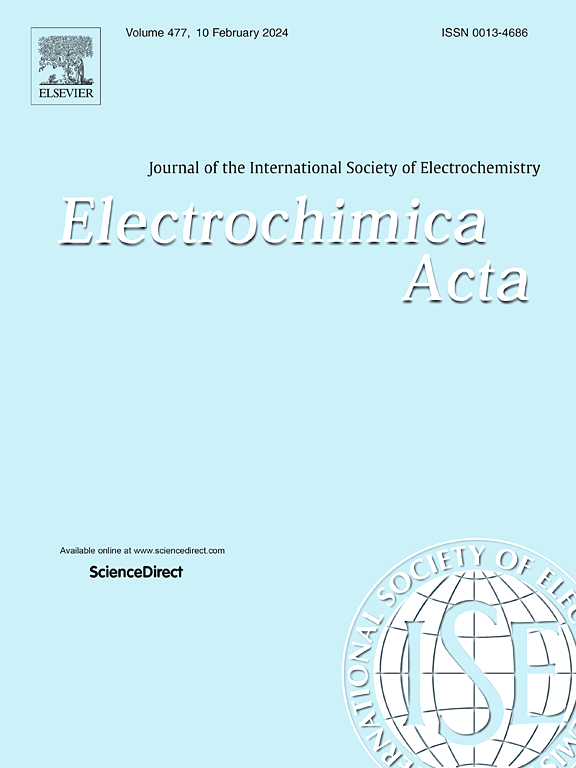纳米Fe2VO4纳米颗粒嵌入碳纳米管快速反应动力学高性能锂存储
IF 5.5
3区 材料科学
Q1 ELECTROCHEMISTRY
引用次数: 0
摘要
铁钒氧化物具有丰富的资源和基于多电子传递过程的高容量,作为锂离子电池负极材料具有很大的开发潜力。然而,低电导率和大体积变化可能导致反应动力学缓慢和容量衰减迅速。通过水热反应和后续热处理,将Fe2VO4纳米颗粒均匀嵌入碳纳米管(FVO/CNT)中。得益于碳纳米管的高导电性和结构稳定性,FVO/CNT复合材料具有优异的锂存储性能,具有优异的动力学和高可逆容量。此外,以LiFePO4为阴极的锂离子电池表现出优异的循环稳定性(0.2 A g-1下100次循环181.5 mAh g-1, 2.0 A g-1下500次循环96.4 mAh g-1)。本研究为储能材料的电化学反应分析开辟了一条有前途的途径,为高性能耐用锂离子电池的研制提供了有价值的指导。本文章由计算机程序翻译,如有差异,请以英文原文为准。


Fe2VO4 nanoparticles embedded in CNTs with fast reaction kinetics for high-performance lithium storage
Iron vanadium oxides have large exploration potentiality as anode materials for lithium ion batteries owing to their abundant resource and high capacity based on multi-electron transfer process. However, low electrical conductivity and large volume change may lead to the sluggish reaction kinetics and rapid capacity decay. Herein, Fe2VO4 nanoparticles are uniformly embedded in the carbon nanotubes (FVO/CNT) though the hydrothermal reaction and subsequent heat treatment. Benefiting from high electrical conductivity and structural stability of CNT, FVO/CNT composite delivers excellent lithium storage performance with superior kinetics and high reversible capacity. Furthermore, the lithium-ion full cell with LiFePO4 as cathode presents superior cycling stability (181.5 mAh g−1 after 100 cycles at 0.2 A g-1 and 96.4 mAh g-1 after 500 cycles at 2.0 A g-1). This work opens up a promising path for electrochemical reaction analysis of energy storage materials and provides valuable guidance for durable lithium ion batteries with high performance.
求助全文
通过发布文献求助,成功后即可免费获取论文全文。
去求助
来源期刊

Electrochimica Acta
工程技术-电化学
CiteScore
11.30
自引率
6.10%
发文量
1634
审稿时长
41 days
期刊介绍:
Electrochimica Acta is an international journal. It is intended for the publication of both original work and reviews in the field of electrochemistry. Electrochemistry should be interpreted to mean any of the research fields covered by the Divisions of the International Society of Electrochemistry listed below, as well as emerging scientific domains covered by ISE New Topics Committee.
 求助内容:
求助内容: 应助结果提醒方式:
应助结果提醒方式:


